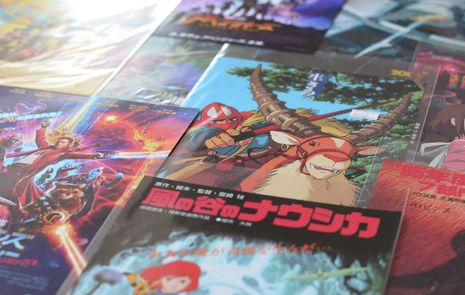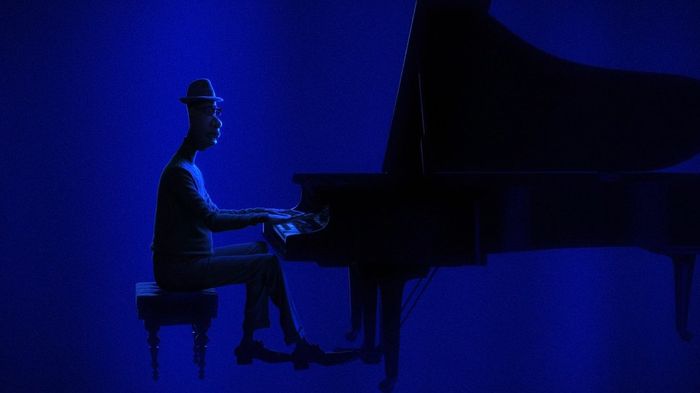Earwig and the Witch Does Not Spell the End for Traditional Animation
Famke Veenstra-Ashmore rejects fans’ negative reactions to Studio Ghibli’s new CG animated feature, arguing instead that Earwig and the Witch is the opportunity for an emerging generation of animators to breathe new life into the studio.

Studio Ghibli, famed for its mastery and preservation of traditional animation, has welcomed the New Year with their first-ever, fully-3D CG film Earwig and the Witch. The 82-minute feature signals a shift in direction for the studio, embracing modern technologies to re-establish their presence in the industry. Directed by Gorō Miyazaki, the film promises to be as inventive as previous titles, whilst offering a distinctive, renewed, approach to style. Despite this, early reception has been mixed. Some long-term fans have mourned the loss of the familiar Ghibli aesthetics, believing it to be symptomatic of the rapid decline in traditional animation.
“Some long-term fans have mourned the loss of the familiar Ghibli aesthetics, believing it to be symptomatic of the rapid decline in traditional animation.”
Adapted from Diana Wynne-Jones’ novel of the same name, the story revolves around Earwig/Āya, a mischievous orphan adopted by witches. Earwig attempts to uncover the secrets of her unusual new parents while investigating the mystery behind her own past. The fact that Earwig and the Witch was published posthumously has given Miyazaki the artistic liberty to revive the story and enhance its features, though Ghibli has never allowed itself to be constrained by strict adherence to source material. The studio’s ability to revive children’s fantasy literature whilst maintaining an uncompromised originality is evident in their transformative version of Wynne-Jones’ Howl’s Moving Castle, as well as their abridging take on Ursula K. Le Guin’s famous series with Tales from Earthsea.
The film looks to be another earnest portrayal of childhood incorporating magical elements. This formula has been well-employed by the studio, successfully put to use with classics such as My Neighbour Totoro and Kiki’s Delivery Service. Their characteristic nostalgia and emphasis on the value of youth ties in well with Earwig’s bold and bright 3D figures and effects. However, this has been met with some resistance from those defending the studio’s use of traditional animation, which allowed for a legacy of beautiful and mature storytelling. Despite this, the scepticism regarding its artistic design may very well wane as the studio and the fans adjust to new forms of animation.
Not only is Miyazaki breaking from Earwig’s predecessors with fresh techniques and visuals, but he also seems to be scouring less-trodden paths for musical inspiration. The movie’s 70s rock-inspired soundtrack is a far cry from the soaring instrumentals and ballads for which Ghibli is famed. The sound of the film will be especially important to fine-tune, since a band will form a part in the storyline. The theme song also boasts the vocals of Grammy Award winner Kacey Musgraves who, alongside actor Richard E. Grant, joins a stellar English dub cast.
“By embracing vogue CG animation, the studio has paved the way for emergent new talent.”
The crucial need for the studio’s reinvigoration stems from the evolving generation of directors, producers, and animators from within, a factor Miyazaki comments on. Discussing the legacy of Hayao Miyazaki and producer Toshio Suzuki, the film’s director notes: “These two can’t carry Studio Ghibli forever [...]. I felt that there’d be no future for the studio if I just copied what they had done.” By embracing vogue CG animation, the studio has paved the way for emergent new talent, while their deliberate distribution to TV release reveals a move towards accessing a broader audience base.
Whilst demonstrative of a change of direction for the studio, traditional animation has not yet been abandoned in the wake of younger techniques. Ghibli patriarch Hayao Miyazaki is posed to direct How Do You Live?, a feature-film in the studio’s classic style. The film is set for release in 2022, and will detail the psychological growth of a 15-year-old boy in Japan. Instead, by embracing a wealth of styles and mediums, the studio may feel more empowered to experiment and modernise, while still retaining their crucial attributes. Although the future focus of Studio Ghibli may appear divided, the ability to manage multiple perspectives and styles will surely only enhance its position as a powerhouse in animation.
Moreover, the future of 2D and traditional animation in general is debatable. Other primary animation studios such as Disney and DreamWorks have long since abandoned the methodology, favouring the speed and cost-effectiveness that 3D animation can offer. However, Ghibli’s traditionally animated films still enjoy considerable levels of success, proving the two forms of animation can coexist successfully in one studio. Other companies may indeed benefit from a similar dual approach to production, allowing for the preservation of traditional animation, while remaining innovative. With the coronavirus pandemic delaying the film’s release, producer Toshio Suzuki considered how Earwig would be received in the current cultural climate, arguing that “a big feature of this work is the wisdom of Āya.” Suzuki expressed his hope that, adjacent to the New Year, a renewed positivity may be felt from the playful yet profound feature.
 News / SU stops offering student discounts8 January 2026
News / SU stops offering student discounts8 January 2026 Comment / Plastic pubs: the problem with Cambridge alehouses 5 January 2026
Comment / Plastic pubs: the problem with Cambridge alehouses 5 January 2026 Science / New year, new room, new you8 January 2026
Science / New year, new room, new you8 January 2026 Comment / What happened to men at Cambridge?31 December 2025
Comment / What happened to men at Cambridge?31 December 2025 News / Uni-linked firms rank among Cambridgeshire’s largest7 January 2026
News / Uni-linked firms rank among Cambridgeshire’s largest7 January 2026











